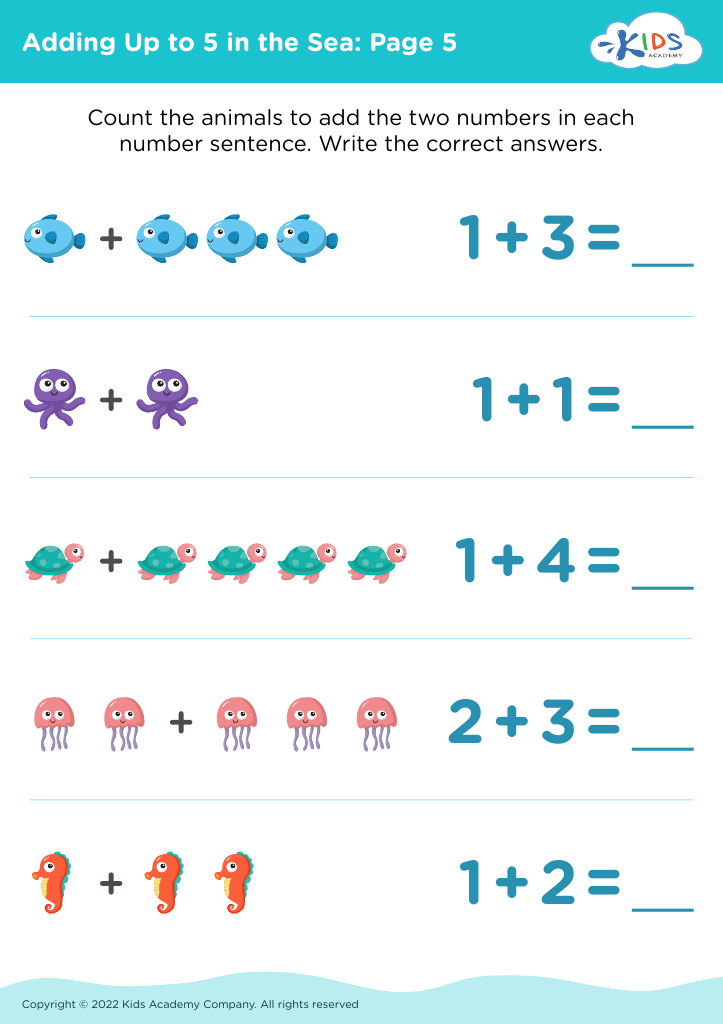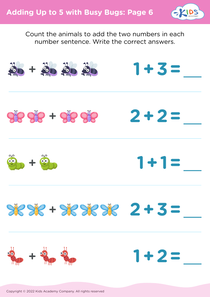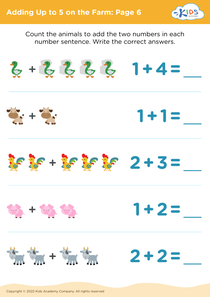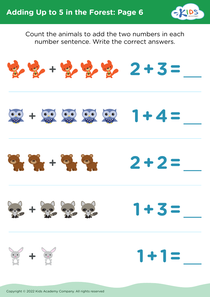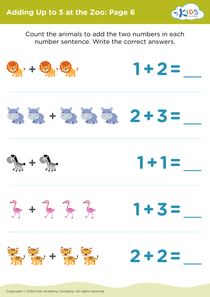Visual perception Adding in the Sea Worksheets for Ages 4-6
3 filtered results
-
From - To
Dive into learning with our "Visual Perception Adding in the Sea Worksheets" for ages 4-6! These engaging printable activities combine math and ocean fun to enhance early learners' visual perception and addition skills. Designed explicitly for young minds, each worksheet features colorful sea creatures to captivate attention and motivate young mathematicians as they count, add, and enjoy delightful underwater scenes. Perfect for at-home practice or classroom use, these worksheets ensure that foundational math skills are built through engaging, interactive, and age-appropriate exercises. Make a splash in your child's math journey with our ocean-themed addition worksheets!
Visual perception is crucial for young learners, and incorporating activities like "Visual Perception Adding in the Sea" for children aged 4-6 can be highly beneficial. At this formative age, kids are developing essential cognitive skills that lay the foundation for later learning. Visual perception exercises help children differentiate shapes, sizes, spatial relationships, and colors—all vital for reading, writing, and daily tasks.
"Visual Perception Adding in the Sea" integrates learning with fun by using a captivating underwater theme. Such thematic activities leverage children's natural curiosity and imagination, making learning engaging and memorable. Underwater-themed tasks can involve counting sea creatures, recognizing patterns, and matching items, all of which enhance a child's ability to process visual information accurately.
For parents and teachers, investing in visual perception activities means preparing children for academic success. Strong visual perception skills improve attention to detail, problem-solving abilities, and overall academic performance. These activities also foster fine motor skills as children interact with materials, improving hand-eye coordination.
Additionally, since play-based learning retains the attention of young children better than traditional methods, such activities ensure that the learning experience is both effective and enjoyable. By caring about visual perception, parents and teachers empower children with the skills needed for a smooth transition into more formal education.

